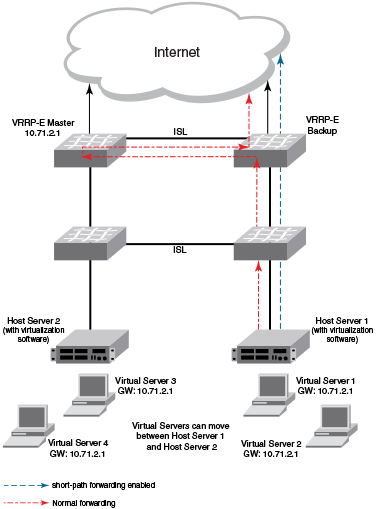VRRP-E load-balancing using short-path forwarding
The VRRP-E Extension for Server Virtualization feature allows devices to bypass the VRRP-E master router and directly forward packets to their destination through interfaces on the VRRP-E backup router. This is called short-path forwarding. A backup router participates in a VRRP-E session only when short-path forwarding is enabled.
Packet routing with short-path forwarding to balance traffic load
When short-path forwarding is enabled, traffic load-balancing is performed because both master and backup devices can be used to forward packets.

If you enable short-path forwarding in both master and backup VRRP-E devices, packets sent by Host Server 1 (in the figure) and destined for the Internet cloud through the device on which a VRRP-E backup interface exists can be routed directly to the VRRP-E backup device (blue dotted line) instead of being switched to the master router and then back (red dotted-dash line).
In the figure, load-balancing is achieved using short-path forwarding by dynamically moving the virtual servers between Host Server 1 and Host Server 2.

